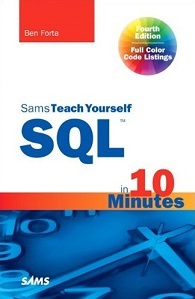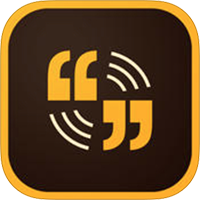Ben Forta's Blog, page 22
September 3, 2015
An Overview Of SVG Patterns
 More web coding goodness to share over on the Dreamweaver blog. This time, Lucas Bebber has posted a really informative overview of SVG patterns, explaining how these can be used to create interesting typographic effects.
More web coding goodness to share over on the Dreamweaver blog. This time, Lucas Bebber has posted a really informative overview of SVG patterns, explaining how these can be used to create interesting typographic effects.
Published on September 03, 2015 06:34
September 1, 2015
CSS Vs. SVG Shapes And More
 Over on the official Dreamweaver blog, Sara Soueidan has posted a fascinatingly insightful article comparing CSS to SVG to create shapes and shaped UI components.
Over on the official Dreamweaver blog, Sara Soueidan has posted a fascinatingly insightful article comparing CSS to SVG to create shapes and shaped UI components.
Published on September 01, 2015 20:00
August 31, 2015
Two Months Free Creative Cloud For Teachers And Students With Prepayment
 Adobe Creative Cloud is available at a discount for students and teachers. In addition to education discounts of up to 66%, for a limited time you can also get two months free when you prepay.
Adobe Creative Cloud is available at a discount for students and teachers. In addition to education discounts of up to 66%, for a limited time you can also get two months free when you prepay.
Published on August 31, 2015 07:51
August 27, 2015
ColdFusion Security Hotfix Released
 A security hotfix has been released for ColdFusion versions 10 and 11 on all platforms. The fix patches a potential vulnerability which could be used to disclose server information.
A security hotfix has been released for ColdFusion versions 10 and 11 on all platforms. The fix patches a potential vulnerability which could be used to disclose server information.
Published on August 27, 2015 17:56
August 24, 2015
Half-Off Sams Teach Yourself SQL In 10 Minutes
 Want to learn SQL? InformIT is running a special on the best reviewed titles on Amazon.com. My Sams Teach Yourself SQL In 10 Minutes is on that list, and so you can use this link to grab a copy of the best-selling SQL book of all time for 40% off (or buy multiple copies at 50% off). This offer ends September 1, 2015.
Want to learn SQL? InformIT is running a special on the best reviewed titles on Amazon.com. My Sams Teach Yourself SQL In 10 Minutes is on that list, and so you can use this link to grab a copy of the best-selling SQL book of all time for 40% off (or buy multiple copies at 50% off). This offer ends September 1, 2015.
Published on August 24, 2015 17:03
August 21, 2015
New PhoneGap Documentation Online
 The PhoneGap documentation has just undergone a pretty dramatic facelift, including really good getting started docs for new PhoneGap developers.
The PhoneGap documentation has just undergone a pretty dramatic facelift, including really good getting started docs for new PhoneGap developers.
Published on August 21, 2015 10:23
August 19, 2015
Back-To-School With Adobe Voice And Slate

 It's Back-To-School time, and teachers all over are prepping for another year spent in the company of fresh eager (yeah, I know, but I'm trying to sound upbeat) faces. Back in prehistoric times, when I was in school, that meant sharpening lots of pencils, trying to get last year's chalk mark remnants off the board, obtaining a stack of clean projector transparencies and duplicator carbon sheets ... ouch! Teachers these days do much the same, although we've (thankfully) traded much of that ancient technology for shiny devices like iPads.
It's Back-To-School time, and teachers all over are prepping for another year spent in the company of fresh eager (yeah, I know, but I'm trying to sound upbeat) faces. Back in prehistoric times, when I was in school, that meant sharpening lots of pencils, trying to get last year's chalk mark remnants off the board, obtaining a stack of clean projector transparencies and duplicator carbon sheets ... ouch! Teachers these days do much the same, although we've (thankfully) traded much of that ancient technology for shiny devices like iPads.Over the past year I've had the good fortune and privilege of meeting lots of passionate teachers the world over, and many have shared the innovative ways that they are using Adobe Voice and Adobe Slate on their classroom iPads. Some of the ideas are so good that I just have to share them.So, in the Back To School spirit, here goes:
Speech and language play: Create a Voice story with a single picture per page, use big bold clear pictures (ideally isolated on a white or clear background to avoid distractions). Have the child go through page by page recording themselves naming the pictured object. (Note: Many teachers have asked how to create copies of blank or starter stories. In both Voice and Slate you can do this by going to the Projects tab, tapping the ... to the right of the project, and then selecting Duplicate).
Sight words proficiency: Create a Voice story with one sight word per page and with no recorded voice. Have the child go through page by page recording themselves reading the words. This can be repeated at intervals so that the children see the progress and improvement for themselves.
Narrative prompts: Similar to the prior ideas, but pick images with an action occurring, and have the student record a single sentence describing what is happening.
Rhyming game: Show a series of pictures, and have the children use Voice to record a word that rhymes with it (as opposed to naming the picture).
Playing with shapes and colors: I've seen lots of variants of this one, all of which thoroughly engaged the students. Assign a color and/or a shape, and have the students walk around the classroom or yard or school building finding matches and describing them in a Voice story.
Second language acquisition: A variant of the above (this one shared with me by teachers teaching Chinese Mandarin and Spanish to English-speaking kids, as well as by an ESL teacher working with immigrant children) is to show pictures or words that need to be translated, having children record the translations. The same picture can be used on multiple pages so that the child records the same word multiple times, building proficiency while being able to hear the improved fluency.
Story starters: Instead of assigning a topic for children to write about, assign a series of images that they must use. Allow them to create their own captions, add images, perhaps even edit the images, and build a story around them. Specify a minimum and maximum duration if using Voice, or a maximum length if using Slate, and then have the students share their work with the rest of the class.
Creative storytelling: With so many children (and their families) taking pictures on smartphones and devices, the odds are high that children will have access to lots of digital pictures capturing their summer break. Both Voice and Slate are great for "What I did this summer" type storytelling. Having the pictures stored on the iPad camera roll will make this project easy and fun. Have the child take a selfie for the title page with a "Hi, my name is X, and this is what I did this summer" message, and then have them use their pictures to share their summer activities.
Book reports: New school year means new books to read and new book reports to write. It's no secret that some children love reading while others don't, and even those that do often don't care for assigned titles and selections. Voice (for younger readers) and Slate (for higher grades) can make book reports fun, engaging, and a highly personal exercise in creativity.
Essays and written assignments: I used to write essays and written assignments in pen in a ruled notebook. My eldest kids got to use Word and then Google Docs. But that's not adequate for kids these days, they want a more polished and professional look and expect tools that let them complement their written creativity with equally creative visuals and presentation. Adobe Slate is superb for this (here's an example created by my youngest son). Just be sure to specify word counts or document lengths or some other guide, otherwise the kids will spend forever looking for images at the expense of actually writing their assignment.
Class reports and blogs: If your class publishes reports for fellow students or parents, Adobe Slate can be a fun way to share classroom news and updates.
Science fair presentations: It's not quite science fair season yet, but I'd be remiss to not share this one. Science fairs usually require a presentation of sorts to the judges, and these presentations are usually lost over time. Students can record their presentations, both to help prep for judging, as well as to record their work for posterity.
These are just a few of the ideas I've come across these past few months. If you have others, please share.

Published on August 19, 2015 08:12
Back To School With Adobe Voice And Slate

 It's Back To School time, and teachers all over are prepping for another year spent in the company of fresh eager (yeah, I know, but I'm trying to sound upbeat) faces. Back in prehistoric times, when I was in school, that meant sharpening lots of pencils, trying to get last year's chalk mark remnants off the board, obtaining a stack of clean projector transparencies and duplicator carbon sheets ... ouch! Teachers these days do much the same, although we've (thankfully) traded much of that ancient technology for shiny devices like iPad's.
It's Back To School time, and teachers all over are prepping for another year spent in the company of fresh eager (yeah, I know, but I'm trying to sound upbeat) faces. Back in prehistoric times, when I was in school, that meant sharpening lots of pencils, trying to get last year's chalk mark remnants off the board, obtaining a stack of clean projector transparencies and duplicator carbon sheets ... ouch! Teachers these days do much the same, although we've (thankfully) traded much of that ancient technology for shiny devices like iPad's.Over the past year I've had the fortune and privilege of meetings lots of passionate teachers the world over, and many have shared the innovative ways that they are using Adobe Voice and Adobe Slate on their classroom iPad's. Some of the ideas are so good that I just have to share them.So, in the Back To School spirit, here goes:
Speech and language play: Create a Voice story with a single picture per page, use big bold clear pictures (ideally isolated on a white or clear background to avoid distractions). Have the child go through page by page recording themselves naming the pictured object. (Note: Many teachers have asked how to create copies of blank or starter stories. In both Voice and Slate you can do this by going to the Projects tab, tapping the ... to the right of the project, and then selecting Duplicate).
Sight words proficiency: Create a Voice story with one sight word per page and with no recorded voice. Have the child go through page by page recording themselves reading the words. This can be repeated at intervals so that the children see the progress and improvement for themselves.
Narrative prompts: Similar to the prior ideas, but pick images with an action occurring, and have the student record a single sentence describing what is happening.
Rhyming game: Show a series of pictures, and have the children use Voice to record a word that rhymes with it (as opposed to naming the picture).
Playing with shapes and colors: I've seen lots of variants of this one, all of which thoroughly engaged the students. Assign a color and/or a shape, and have the students walk around the classroom or yard or school building finding matches and describing them in a Voice story.
Second language acquisition: A variant of the above (this one shared with me by teachers teaching Chinese Mandarin and Spanish to English-speaking kids, as well as by an ESL teacher working with immigrant children) is to show pictures or words that need to be translated, having children record the translations. The same picture can be used on multiple pages so that the child records the same word multiple times, building proficiency while being able to hear the improved fluency.
Story starters: Instead of assigning a topic for children to write about, assign a series of images that they must use. Allow them to create their own captions, add images, perhaps even edit the images, and build a story around them. Specify a minimum and maximum duration if using Voice, or a maximum length if using Slate, and then have the students share their work with the rest of the class.
Creative storytelling: With so many children (and their families) taking pictures on smartphones and devices, the odds are high that children will have access to lots of digital pictures capturing their summer break. Both Voice and Slate are great for "What I did this summer" type storytelling. Having the pictures stored on the iPad camera roll will make this project easy and fun. Have the child take a selfie for the title page with a "Hi, my name is X, and this is what I did this summer" message, and then have them use their pictures to share their summer activities.
Book reports: New school year means new books to read and new book reports to write. It's no secret that some children love reading while others don't, and even those that do often don't care for assigned titles and selections. Voice (for younger readers) and Slate (for higher grades) can make book reports fun, engaging, and a highly personal exercise in creativity.
Essays and written assignments: I used to write essays and written assignments in pen in a ruled notebook. My eldest kids got to use Word and then Google Docs. But that's not adequate for kids these days, they want a more polished and professional look and expect tools that let them compliment their written creativity with equally creative visuals and presentation. Adobe Slate is superb for this (here's an example created by my youngest son). Just be sure to specify word counts or document lengths or some other guide, otherwise the kids will spend forever looking for images at the expense of actually writing their assignment.
Class reports and blogs: If your class publishes reports for fellow students or parents, Adobe Slate can be a fun way to share classroom news and updates.
Science fair presentations: It's not quite science fair season yet, but I'd be remiss to not share this one. Science fairs usually require a presentation of sorts to the judges, and these presentations are usually lost over time. Students can record their presentations, both to help prep for judging, as well as to record their work for prosperity.
These are just a few of the ideas I've come across these past few months. If you have others, please share.

Published on August 19, 2015 08:12
August 17, 2015
Beta Versions of Flash And AIR 19 Released

 Beta versions of both Flash Player 19 and AIR 19 (code named "Quint") have been posted to Adobe Labs.
Beta versions of both Flash Player 19 and AIR 19 (code named "Quint") have been posted to Adobe Labs.
Published on August 17, 2015 09:45
Adobe Voice Updated
 We just made Adobe Voice a little better (yep, hard to believe that's possible, I know). You can now tap a page thumbnail at the bottom of the screen to initiate review playback from the selected slide. You're welcome.
We just made Adobe Voice a little better (yep, hard to believe that's possible, I know). You can now tap a page thumbnail at the bottom of the screen to initiate review playback from the selected slide. You're welcome.
Published on August 17, 2015 08:08
Ben Forta's Blog
- Ben Forta's profile
- 6 followers
Ben Forta isn't a Goodreads Author
(yet),
but they
do have a blog,
so here are some recent posts imported from
their feed.



